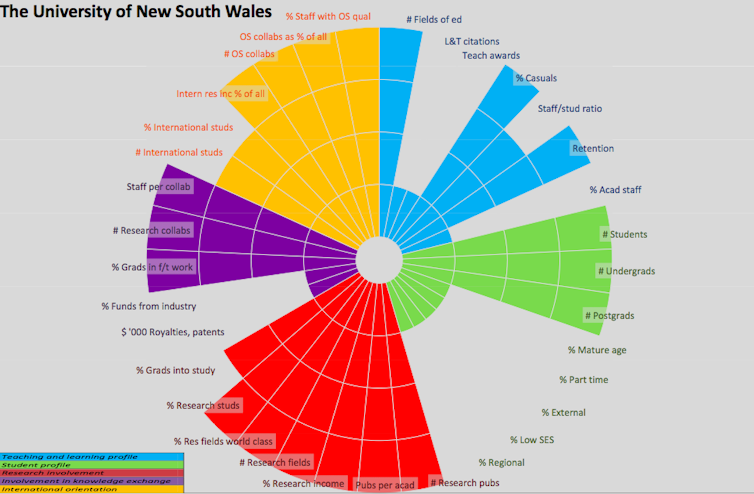A new Australian university profile system has today released its first round of data, mirroring similar tools in Europe.
The new measure comes as part of a wider search for alternatives to traditional university rankings, like the Times Higher Education or QS world measures, which tend to favour older, research intensive universities.
The exercise – conducted by the University of Melbourne’s LH Martin Institute and the Australian Council for Educational Research (ACER) – aims to get a more accurate picture of the diversity in the university system, create more transparency about Australian institutions, and give greater information to the public and policymakers.
LH Martin director Leo Goedegebuure said the experiment was there “not to compete, but to complement” existing university measures like rankings. Traditional rankings gave “a very simple, often narrow picture of what actually our universities do,” he said.
The new Australian profiles are modelled partly on their European counterparts, U-Map and U-Multirank. Professor Goedegebuure said the profiles came about in part because:
…we wanted to see how well [these models] would be applicable to the Australian situation. And I think, by and large, it worked…but there is still much to be improved.
The university profiles are represented in “sunburst charts” showing five colour-coded areas of university activity, including teaching and learning, research, student profile, knowledge exchange, and international presence. Each area contains a suite of publicly available data that’s represented visually, showing information like student-staff ratios and publications per academic.

Based on these, universities are then put into six broad categories: new regional universities; mid-sized mid-ranked research universities; smaller newer universities; big research intensive universities; and research intensive universities in smaller cities.
Higher education expert Gavin Moodie welcomed the exercise, saying the experiment had been “useful”. But he said that to be really valuable, the project needed to widen its scope and include all higher education institutions.
“The study excludes 130 higher education colleges, thus considerably under-representing the diversity of Australian higher education”, he said. Moodie also suggested that the age of an institution should be included because “age is a major determinant of institutions’ characteristics and performance.”
Dr Tseen-Ling Khoo, senior advisor for research development at RMIT University, said the profiles were “an ambitious project” and appeared to “offer more nuanced perspectives than traditional rankings”.
“For research in particular, the consideration of a range of factors (including those of "Knowledge Exchange”) gives a much richer picture than the usual blunt indicators of research income, number of publications, and number of research postgraduates.“
But she said there was a risk that exercise would become just another rankings system, even if "it was a more sophisticated one”.
Both Mr Moodie and Dr Khoo’s institutions were profiled under the LH Martin/ACER exercise.

